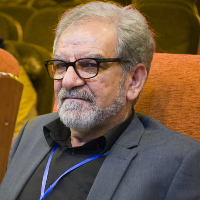Evaluation Possibility of Calibration of LISSIII & ASTER Sensors by Using of Salt Crusts in Dry Areas of Iran
One of the key issues in quantitative analysis of digital satellite data is to ensure that the sensitivity of the satellite's radiometer is stable after launch. Achieving such a goal requires radiometric calibration of the satellite sensor. The aim of this study was to investigate the possibility of using arid salt marshes as reference terrestrial phenomena for radiometric calibration of LISSIII and ASTER sensors. For this purpose, salt fields in dry areas of Damghan, Kashan and Maharloo were used for radiometric calibration of reflective bands of LISSIII and ASTER sensors.
First, the characteristics of salt fields in the study areas were evaluated based on previous research, field studies and available satellite data. Then, using the calibration relationships, the information in the guide files as well as the calibration coefficients of the sensors used, the spectral reflectance of the saltworks in the reflection bands were calculated and the correlation between the brightness of the images and the spectral reflection of the saltworks (satellite sensor radiation above the atmosphere) was evaluated.
The linear relationship and high correlation coefficient (more than 0.8) in each of the visible and infrared bands near LISSIII and ASTER sensors showed that arid salt marshes as reference terrestrial phenomena can be limited to radiometric calibration of LISSIII and ASTER sensors in LISSIII and ASTER sensors. And infrared close to have efficiency.
The results showed that the trend of changes is very consistent with each other (explanation coefficient between 0.8 to 0.9), in other words, with increasing the degree of brightness, the amount of spectral reflection also increases. Due to the linear relationship and high correlation coefficient (more than 0.8) in each of the visible and infrared bands near LISSIII and ASTER sensors, the atmosphere did not have much effect on the received radiation of the sensor.
Calibration , Sensor , Kashsn , Damghan , Maharlo
-
Combination of Semi-Empirical Radar Remote Sensing Models for Soil Moisture Retrieval During the Plant Growing Season Based on Machine Learning
Amir Sedighi, Saeid Hamzeh *, , Abd Ali Naseri, Jamal Mohammadi Moalezade
Iran Water Resources Research, -
The influence of urban stractures, vegetation cover, and utilized data in urban impervious surface mapping from multi-source data
Ali Abdolkhani, Sara Attarchi *,
Geographical Urban Planning Research,


